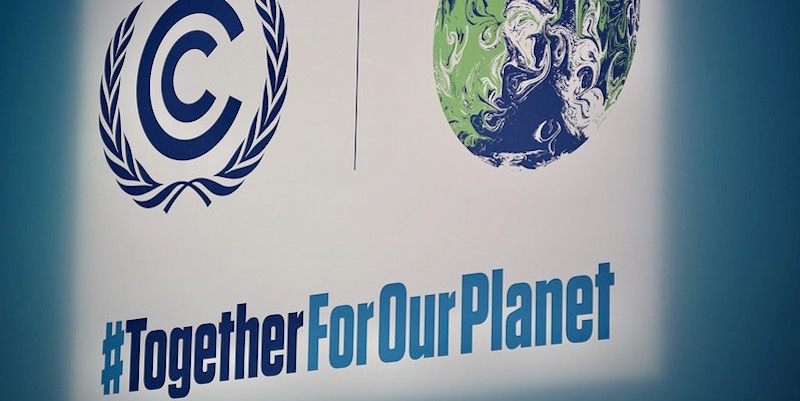Ashraf Engineer
November 6, 2021

EPISODE TRANSCRIPT
Hello and welcome to All Indians Matter. I am Ashraf Engineer.
You would have heard about the 2021 United Nations Climate Change Conference, popularly known as COP26, that was inaugurated in Glasgow, Scotland, recently. This meeting of the world’s leaders was key to creating a roadmap to rein in emissions and global warming. It was expected to arrive at a greater commitment and a clear roadmap to a sustainable future but, other than vague statements, not much was achieved. This is unfortunate because there was a lot at stake for India.
SIGNATURE TUNE
The COP26, or the 26th Conference of the Parties to the United Nations Framework Convention on Climate Change, was the third meeting of the signatories to the Paris Agreement – an international treaty adopted in 2015 that covered climate change mitigation and finance.
At COP26, the G20 countries made a commitment to limiting global warming to 1.5 degrees Celsius, but it was unclear how. It seemed like mere words. Many warned that much more was needed. British Prime Minister Boris Johnson, for instance, said the pledge was not enough and repeated dire warnings about the climate. He called the commitment mere “drops in a rapidly warming ocean”. UN Secretary-General Antonio Guterres too said he was leaving “with my hopes unfulfilled”.
The G20 nations are important because they account for 80% of the world’s carbon emissions. But, instead of concrete steps, all the world got was language like the G20 would take “meaningful and effective actions and commitment, taking into account different approaches”.
What we needed was a concrete plan. Experts said meeting the 1.5-degree target means cutting emissions by half as early as 2030 and to net zero by 2050. However, the G20 set no firm date, mentioning only a deadline of “by or around mid-century”.
No wonder environmental activist group Greenpeace said the statement was “weak, lacking both ambition and vision”. It added that G20 leaders “failed to meet the moment”. Others, such as Friederike Roder, of the anti-poverty group Global Citizen, said the summit produced “half measures rather than concrete actions”.
Some of the leaders at the COP26 countered that the needle had moved in the past few days, including by China – the world’s biggest carbon polluter. Beijing says it will become carbon-neutral before 2060 but has resisted pressure to commit to near-term goals.
Why was the COP26 looked upon with such hope?
The world has become hotter by 1.1 degrees since the Industrial Revolution, which happened roughly 200 years ago. Two centuries of emissions, fumes and tree chopping have devastated the climate. COP26’s host city, Glasgow, in fact, just experienced its hottest summer on record.
As with humans, the difference between normalcy and fever can be less than 1 degree and the past decade has been the Earth’s hottest on record.
The COP26’s primary objective was to push the world towards the 1.5-degree target, which is considered the upper limit before disaster strikes. Even a slight missing of the target would raise risks to unmanageable levels. Computer models built by the Intergovernmental Panel on Climate Change say 420 million more people would be frequently exposed to extreme heat and heat-related deaths would double if temperatures rise 2 degrees rather than 1.5 degrees.
It would also mean more water stress, hunger, poverty and risks to food security. There would be a high likelihood of extreme drought and economies like India, Brazil and Mexico would be badly hit.
Additionally, a 2-degree rise would mean 18% of insect species, 16% of plants and 8% of vertebrates would lose half their habitats. This too would put more pressure on food production and water quality. The oceans, meanwhile, would get more acidic, oxygen levels would plummet and there would be more dead zones. This would affect fishing communities and destroy coral.
It gets worse. The temperature rise would make ice-free Arctic summers 10 times more likely and expose 2.5 million sq km of permafrost to melting. As a result, by the end of this century, sea levels would rise at least 10 cm more than they would at 1.5 degrees Celsius, leaving 10.4 million more people at risk of flooding.
The COP26 was crucial because the UN calculates that the temperature rise will, in fact, be higher than even 2 degrees. It calculates that the Earth is on track to become 2.7 degrees hotter. This is why the world needed real leadership at COP26.
Let’s now come to India.
India is the world’s second most populous country and will eventually overtake China to become the most populous. Like many countries in South Asia, it is particularly vulnerable to the impact of climate change.
India’s climate commitments include a reduction in the economy’s carbon intensity. In layman’s terms, it means that emissions will grow along with its economy but at a slightly slower pace. But various observers, such as the Climate Action Tracker, a think tank, have said this is not enough.
It is widely believed that India will become the world’s second biggest polluter by the second half of this century. And so it is under pressure to get to net zero as soon as possible. Net zero means that a country is absorbing all the emissions it is producing, thus having no emission-related impact on the environment.
For this to happen, some scientists believe that climate financing of $100 billion per year is urgently needed at a global level. India, on the other hand, believes it will require a few trillions. Climate financing supports mitigation and adaptation action that addresses warming. Also, many believe that the 2050 deadline is too distant – net zero needs to be achieved much earlier.
India, meanwhile, committed to becoming net zero by 2070 only. Again, the challenge is figuring out how to finance this transition.
India reiterated its stance that it’s for the rich countries to support poor nations by raising the money to accelerate the shift to clean energy. It argues that it’s for the rich countries to make greater sacrifices than the poorer ones. They are the ones, it says, that should become carbon-neutral years earlier to allow poorer nations time to develop. India has made it clear that it won’t raise its commitments under pressure from developed countries.
On its part, India has set ambitious clean energy goals – it had set a target of 450 GW of capacity to be installed by 2030 and has now raised that to 500 GW. However, 80% of India’s energy needs are met by fossil fuels, particularly coal, which is highly polluting. And not everyone believes that its grandiose pronouncements on clean energy will result in targets being achieved – especially given this government’s poor track record.
Whatever the merits of the arguments and counter-arguments, yet another summit that has paid only lip service to mitigating climate change has taken place and it hasn’t given us much hope for the future. This failure has underscored the urgency to act. But, without real climate leadership, effective action is unlikely and the future seems very, very hot.
Thank you all for listening. Please visit allindiansmatter.in for more columns and audio podcasts. You can follow me on Twitter at @AshrafEngineer and @AllIndiansCount. Search for the All Indians Matter page on Facebook. On Instagram, the handle is @AllIndiansMatter. Email me at editor@www.allindiansmatter.in. Catch you again soon.






